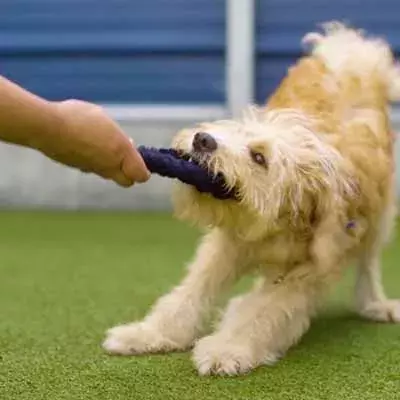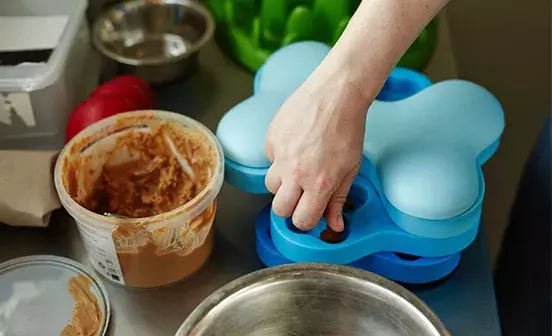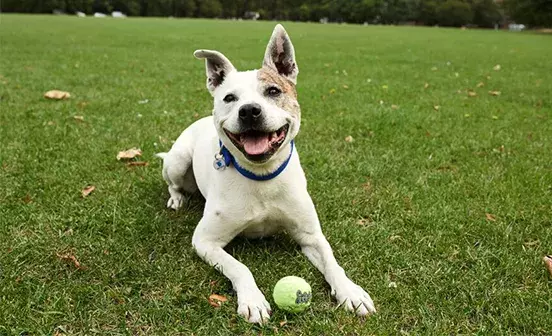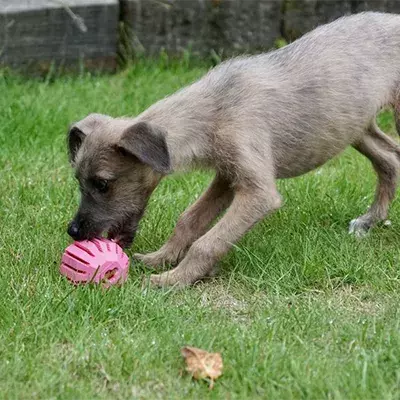If you have a dog that likes to take and hide things, it can be incredibly frustrating. But there are practical steps you can take to stop them from doing this. In this guide, we’ll look at why dogs might steal and hide items. We’ll also share how, with patience and gentle encouragement, you can teach your dog to stop doing it.
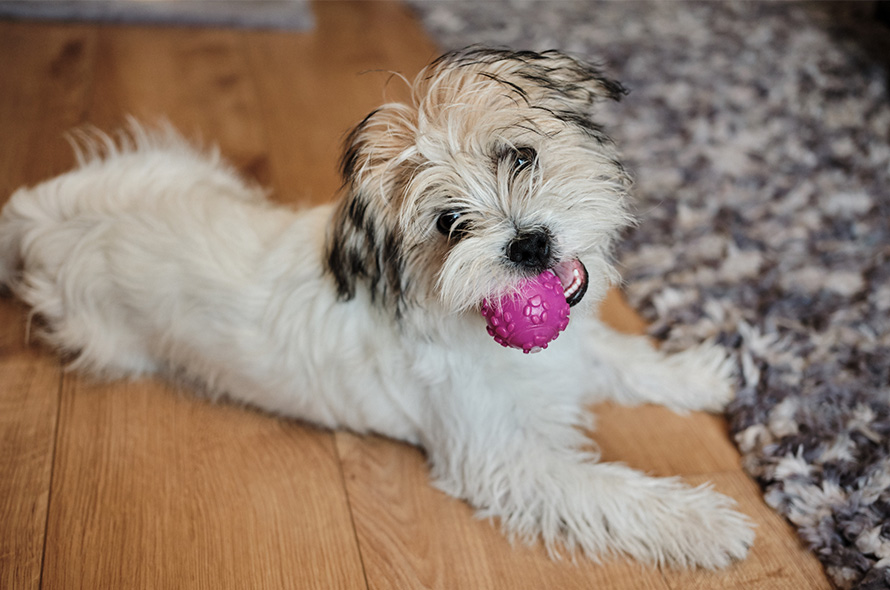
Why do dogs steal and hide things?
If your dog is stealing items, it could be because they’re bored or want your attention. They may have learned from a young age that it’s a fun thing to do. If they took something of yours and ran off with it, you might have chased after them to get it back. This would be like a fun game of chase or tug-of-war for a young puppy!
By playing along, it’s encouraging your dog to keep doing it. So it’s best to discourage this behaviour by stopping it from seeming like a fun game.
If your dog hides things, it may be because they’re stressed, bored, or just saving it for later.
In a household with several dogs, some may hide their favourite possessions in odd places to prevent other dogs from getting to them. Giving each dog the same toy can help reduce competition between them, as they’ll all have their own toy to enjoy.
If you have a female dog that’s hiding or trying to bury her belongings intensely, it’s important to watch her closely. This could be a sign of nesting behaviour. This could be a sign of a phantom pregnancy, so seeking medical advice from your vet is vital.
How to stop stealing and hiding behaviours
Now that we know why dogs might steal and hide things let’s look at how we can stop them from doing it.
Remove temptations
Limit the opportunities for your dog to get up to mischief. Put away tempting items like socks or slippers that may catch your dog’s attention. Make sure you always keep any valuable and potentially dangerous things out of reach.
Ignore the behaviour
If your dog has stolen something that isn’t theirs, don’t chase them. Instead, ignore their behaviour until they lose interest in the item. This way, you’re not giving them attention, and you’re taking the fun out of their game. Keep in mind that your dog may try to steal more things to get you to play with them, so be patient and wait it out. Eventually, your dog will learn that stealing doesn’t lead to any fun or rewards.
When your dog drops the stolen item and plays with their toys instead, be sure to give them plenty of praise for their good behaviour. It’s important to reinforce good habits and let them know when their behaviour is good.
Don’t tell your dog off for stealing or hiding items, because they might not link it to their previous behaviour. It might also encourage them to repeat the behaviour.
If you know your dog likes to stash away certain items like slippers or remote controls, try to keep them out of reach. This can help prevent your dog from getting into the habit of hiding things.
Provide other sources of enrichment
Offer toys and puzzle games
It’s a good idea to have plenty of toys and puzzle games available. Make sure your dog’s toy box is always within reach and give them food toys or puzzle games to play with throughout the day. This way, they can still have fun without you chasing them around the house.
If your dog is burying things out of boredom, providing lots of enrichment can combat this. Food puzzles, stuffed KONG toys and snuffle mats are great ways to keep your dog occupied and mentally stimulated throughout the day. Some dogs may prefer shorter-lasting forms of enrichment, like ice cubes or frozen chews. It’s important to avoid using sand pits as this can encourage burying behaviour.
Give access to other safe items
Have a few safe items dotted around the house that your dog can take without you worrying about it too much. Things like empty toilet roll tubes or old rags/dishcloths will do the trick. If you’re not worried about these items being stolen, it’ll be much easier to ignore the behaviour.
It’s crucial to make sure that any items that could harm your dog are out of reach. If this happens, scatter some of their food on the floor to distract them and then take the item away to a safe spot.
Teach your dog to swap or drop things
If your dog's stolen something dangerous or toxic, you’ll need to get them to drop it straight away.
In this type of situation, try exchanging the object for something they love. For example, you could swap the item for a piece of chicken or their favourite toy. Just make sure to offer the food or toy before trying to take away the stolen item. Ideally, your dog will drop the item before you remove it.
Exchanging items for toys makes for a great opportunity to teach your dog a new trick. Present to them their favourite toy and say ‘drop’ to encourage them to swap the stolen item. After a few practice rounds, wait to say ‘drop’ before giving your dog the toy as a reward when they follow your instruction. For more tips on teaching this cue, read our advice on teaching your dog to ‘drop it’.
Teach your dog to tidy up
If your dog hides their toys, rewarding them for putting them in the correct place, like a toy box, can help.
Just like when they steal items, you can use a ‘drop’ cue.
- Step one: Practice by telling your dog to ‘drop’ their toy over the toy box. When they let go of the toy, exchange it for food dropped into the box. This will encourage your dog to ‘drop’ their toys in the box and get them used to having their head in the box. You can build on the behaviour by throwing toys out of the box, having your dog bring them back, and dropping them in the box for a reward.
- Step two: Once your dog has got the hang of the ‘drop’ cue, stand by the toy box and hand the item to your dog so their head is directly over the box when they take it. Immediately ask them to drop the toy so it falls into the box when they let go. Don’t worry if the toy doesn’t go into the box initially; be generous and encouraging as they learn. When your dog drops the toy, put a treat inside the box so they have to put their head in to retrieve it. This way, they’ll learn that good things happen when they put their head in the box.
- Step three: When your dog’s comfortable dropping the toy into the box when asked, throw the toy a few feet away from the box. Your dog will probably run after it and bring it back to you. Watch closely to see if they drop the toy in the box without you asking them to do so. You want the ‘drop’ cue to become second nature without you needing to ask for it every time. Reward them with a treat and lots of praise when they drop the toy in the box without prompting.
- Step four: Try throwing the toy in different spots around the room. This helps your dog learn the toy won’t always be in the same place. You could also add a new toy to the process. Be aware that this might confuse your dog to begin with because they’ll associate a reward with the first toy. If they seem lost, go back to the first step and have them drop the new toy right over the box. Then, toss the new toy and wait for your dog to bring it to the box.
- Step five: Once your dog can successfully bring each toy back to the box, it’s time to add a cue like ‘tidy up’. Say the cue as your dog to collect a toy. This step names the behaviour and cements the words to the action your dog is already doing. Try to use the phrase ‘tidy up’ every time your dog does this process at first. After about 10–20 repetitions (across a few training sessions), your dog will get the hang of it. They’ll understand that ‘tidy up’ means it’s time to gather their toys and put them away. Then, you can just say ‘tidy up’ and watch your dog do their thing!
Teaching your dog not to steal or hide things may take some time and effort. But if you’re patient, consistent and encouraging, they’ll catch on soon enough.
